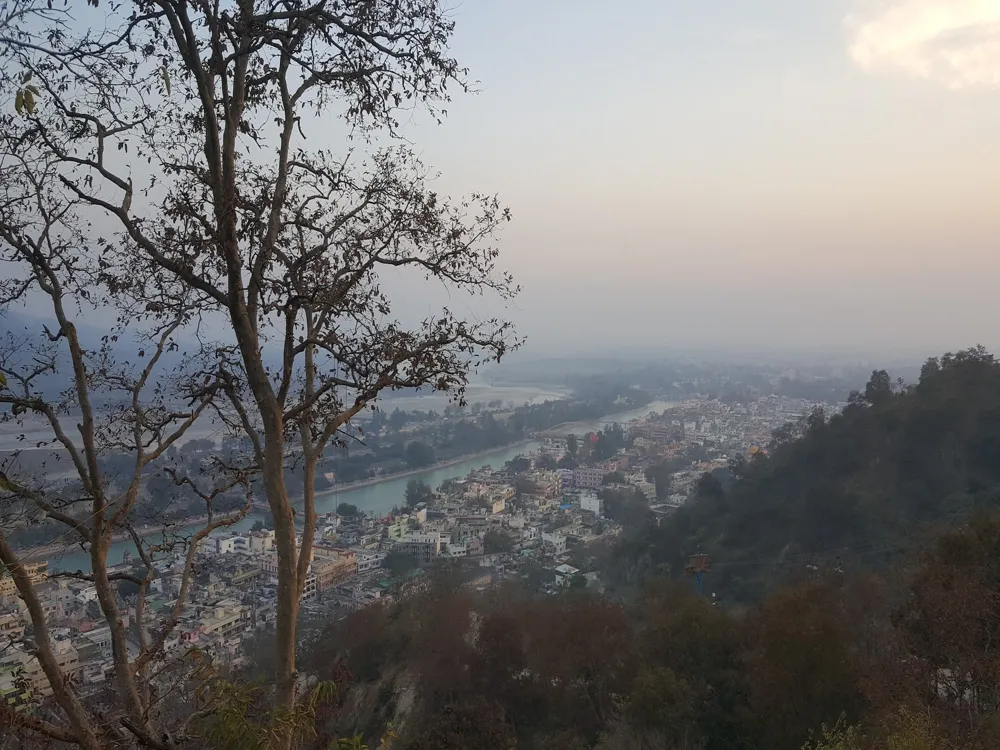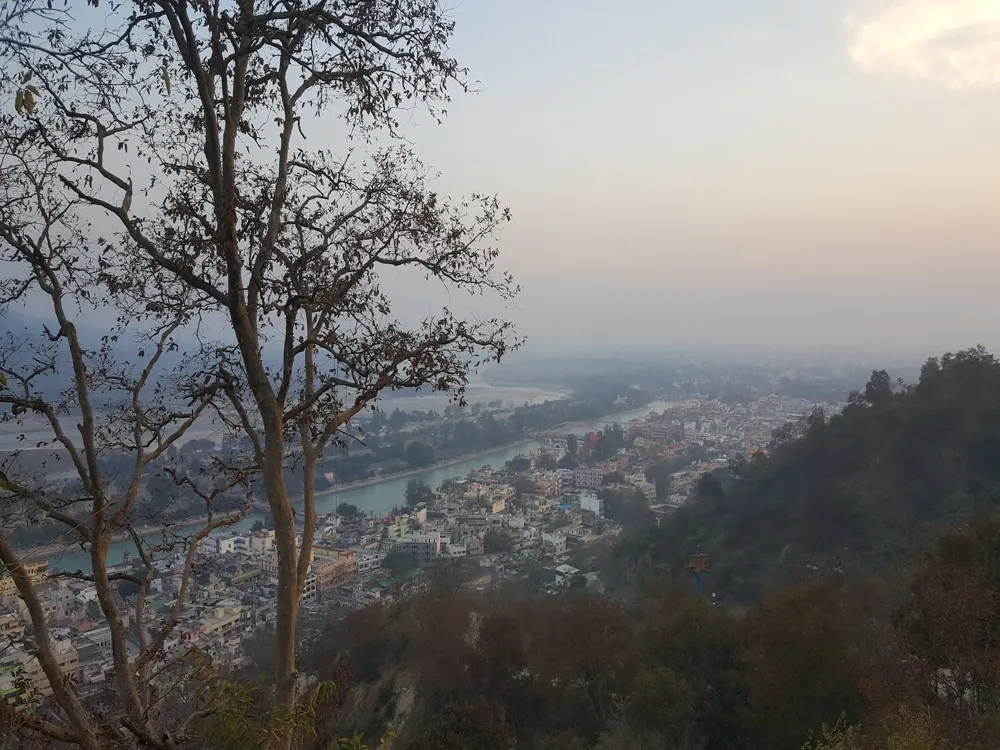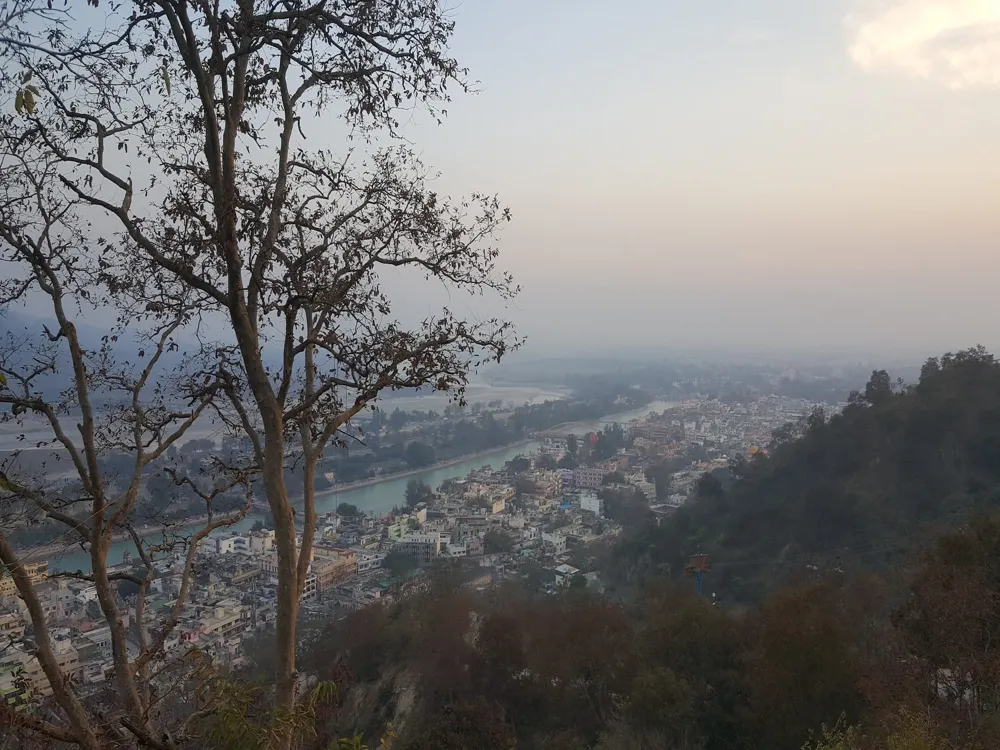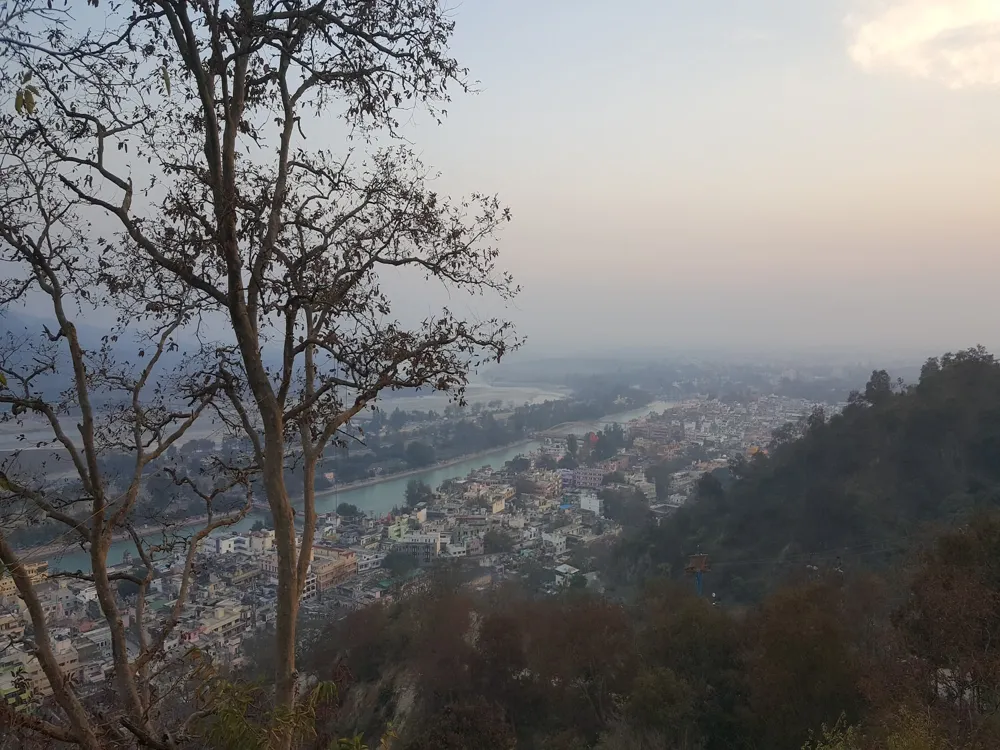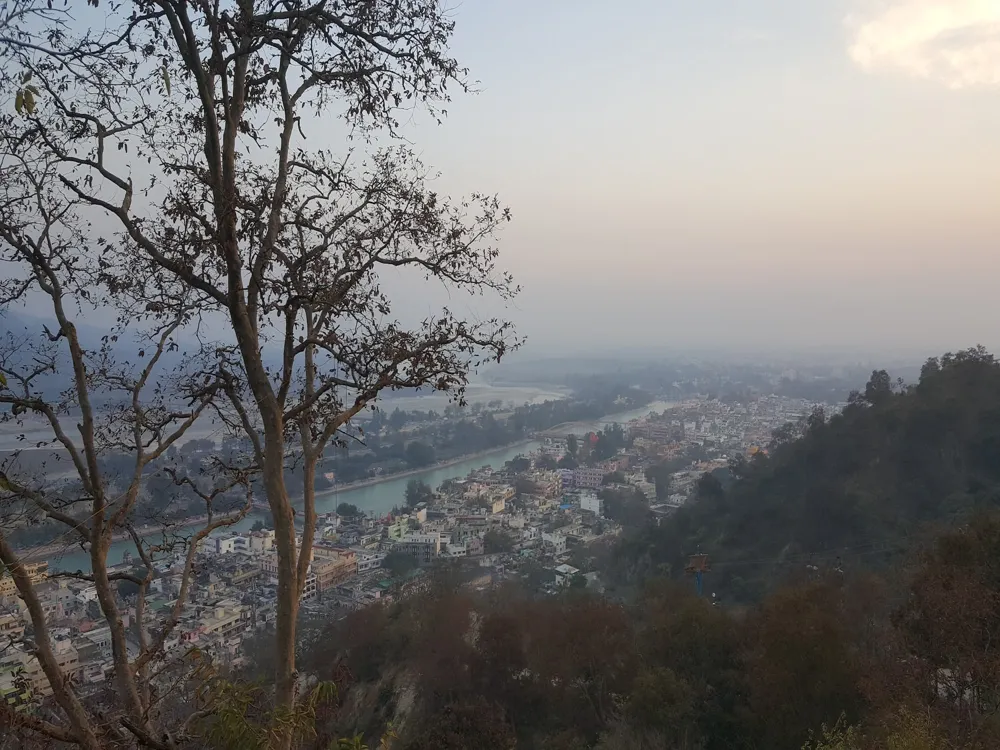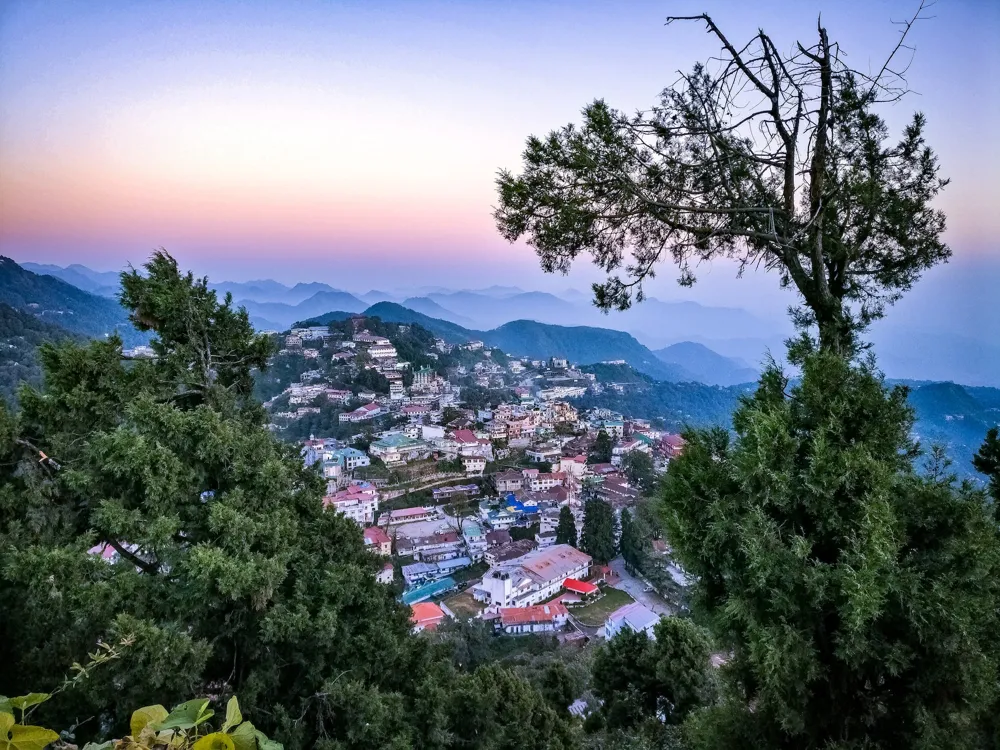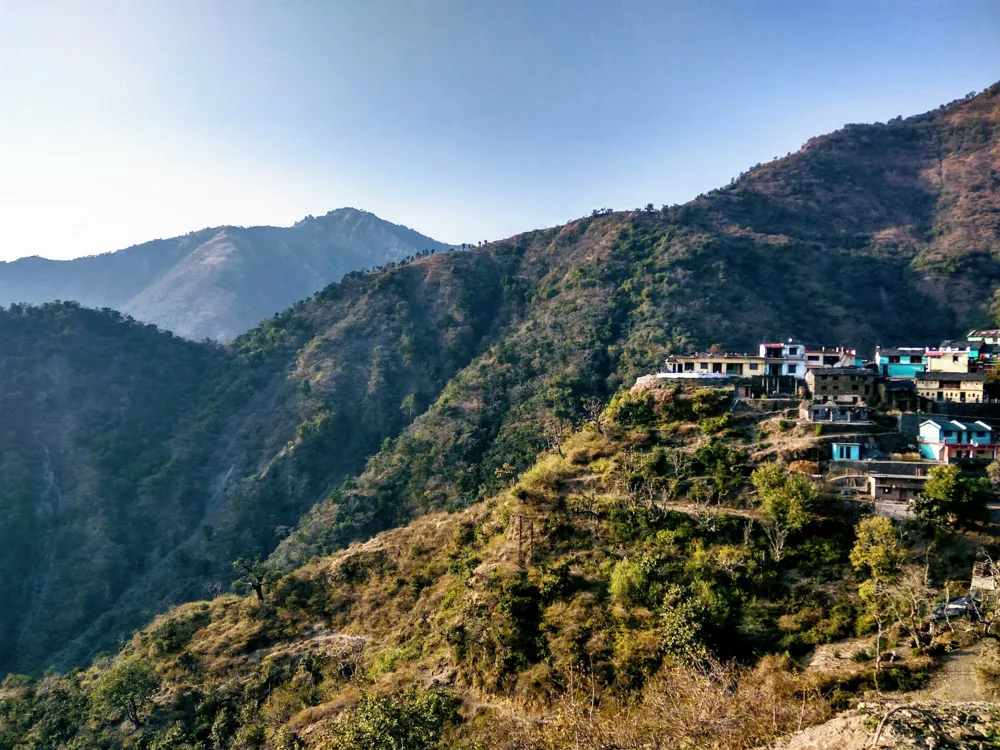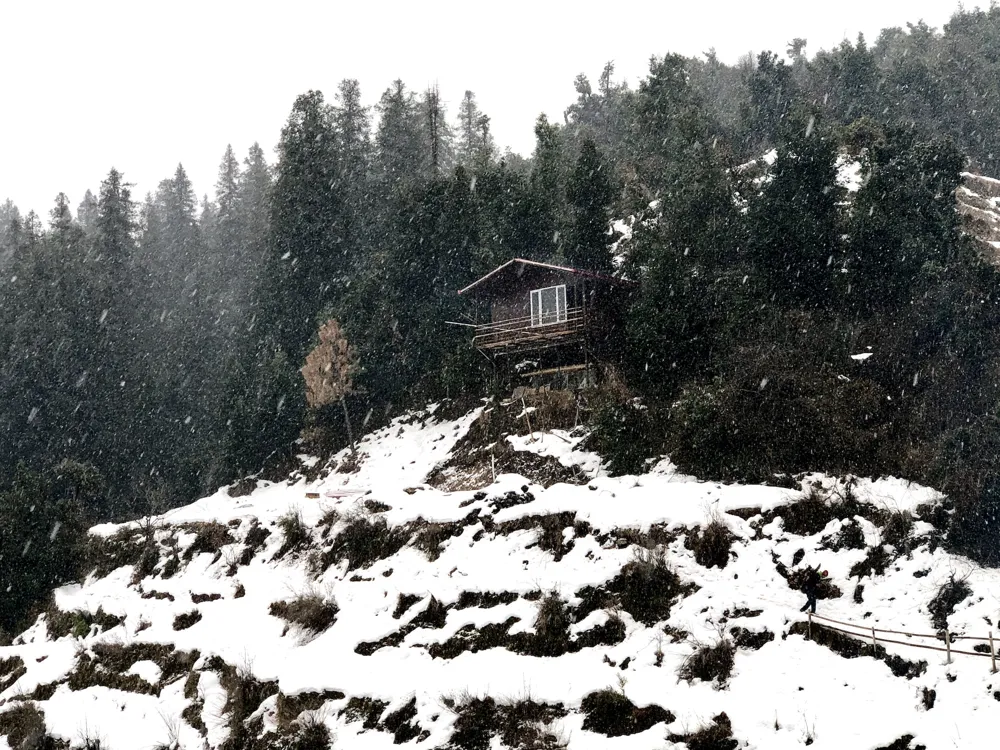Haridwar, a city in the Uttarakhand state of India, is a blend of divinity, culture, and history. Situated along the holy river Ganges, it is one of the seven holiest places in Hinduism. The city's name, 'Haridwar,' translates to 'Gateway to God,' reflecting its significance as a spiritual destination. The Ganges, after flowing through the Himalayas, enters the plains at Haridwar, making it a focal point for pilgrims seeking blessings and purification. Haridwar's vibrant culture is evident in its bustling streets, filled with temples, ashrams, and marketplaces. The city's unique charm lies in its ability to balance the old-world spirituality with the dynamism of a modern city. Annually, Haridwar hosts the Kumbh Mela, the largest religious gathering in the world, attracting millions of devotees. This city is not just a spiritual center but also a hub for learning Yoga and Ayurveda, ancient Indian sciences that have gained global recognition.
The geographical setting of Haridwar is as intriguing as its spiritual ethos. Nestled at the foothills of the Shivalik range, the city marks the point where the Ganges emerges from the mountains to enter the plains. This transition gives Haridwar a picturesque landscape, with the river adding to its serene beauty. The city's climate varies from tropical to subtropical, making it a destination for visitors throughout the year. The surrounding forests and the Rajaji National Park nearby contribute to the city's rich biodiversity, offering a natural retreat alongside spiritual rejuvenation.
Haridwar's history dates back to ancient times, with references in several Hindu scriptures. The city has been a witness to various dynasties and cultures, each leaving its imprint. Haridwar's culture is a tapestry of various traditions, rituals, and practices centered around Hinduism. The Ganga Aarti at Har Ki Pauri, an enchanting ceremony of lights and chants, is a mesmerizing experience that epitomizes the city's spiritual essence. Festivals like Diwali and Navratri are celebrated with great fervor, showcasing Haridwar's rich cultural tapestry. The city's cuisine, predominantly vegetarian, offers a variety of local flavors, reflecting its religious and cultural ethos.
The architecture of Haridwar is a testament to its spiritual and historical significance. The cityscape is dotted with ancient temples, ashrams, and ghats (riverfront steps), each with its unique architectural style and spiritual importance. The temples in Haridwar, often ancient, exhibit various architectural styles from different periods. These structures are not just places of worship but also artistic representations of mythological stories and cultural heritage. The ghats of Haridwar, particularly Har Ki Pauri, are architectural marvels in themselves. Built along the Ganges, they provide a sacred space for pilgrims to perform rituals and offer prayers. The intricate carvings and designs on these ghats reflect the craftsmanship and artistic legacy of the region.
Haridwar's temples are a central aspect of its architectural landscape. The Mansa Devi Temple and Chandi Devi Temple, situated atop hills, offer panoramic views of the city. These temples, accessible via ropeway or trekking, are embodiments of ancient Indian architectural techniques and styles. The Bharat Mata Temple, dedicated to Mother India, is a unique structure that celebrates the country's diverse religions and cultures. Another notable architectural landmark is the Daksha Mahadev Temple, steeped in mythological significance and known for its grand architecture and intricate carvings.
In Haridwar, architecture harmoniously blends with nature. The ghats, aligned with the river's flow, provide a seamless transition from land to water. Many ashrams and temples are surrounded by gardens and forests, creating a tranquil environment for meditation and spiritual practices. This integration of architecture with nature is a distinct feature of Haridwar, offering a serene and contemplative space for pilgrims and visitors.
While Haridwar is deeply rooted in tradition, it has also embraced modern architectural developments. The city's infrastructure has evolved to accommodate the growing number of pilgrims and tourists. Contemporary buildings, including hotels, educational institutions, and hospitals, are designed to complement the city's spiritual ambiance while providing modern amenities. This blend of ancient and modern architecture makes Haridwar a unique destination that respects its past while progressing towards the future.
When visiting Haridwar, it is advisable to dress modestly, respecting the city's spiritual nature. Traditional Indian attire is recommended, especially when visiting temples and religious sites. Behavior should be respectful and considerate, particularly during ceremonies and rituals.
The best time to visit Haridwar is from October to April, when the weather is pleasant. However, visiting during the Kumbh Mela can be a unique experience, although it is more crowded during this period.
Haridwar offers a variety of vegetarian delicacies. Trying local street food, like Aloo Puri and Kachori, is a must. However, visitors should ensure to eat at clean and reputable places to avoid health issues.
Haridwar is well-connected by road, rail, and air. It is advisable to book accommodations in advance, especially during peak seasons and festivals. Options range from budget stays to luxury hotels.
While Haridwar is generally safe, visitors should be cautious with their belongings in crowded places. It is also important to respect religious sentiments and practices, avoiding photography in restricted areas.
Haridwar is accessible by various modes of transportation. The nearest airport is the Jolly Grant Airport in Dehradun, about 35 kilometers away. Regular flights connect Dehradun with major cities of India. Haridwar's railway station is a major junction, with trains from various parts of the country. The city is also well-connected by roads, with state and national highways linking it to other major cities. For local transportation within Haridwar, options like auto-rickshaws, taxis, and buses are available, providing convenient ways to explore the city.
Overview of Haridwar, Uttarakhand
Geographical Significance
Cultural and Historical Heritage
Architecture of Haridwar
Temples and Their Significance
Integration of Nature in Architecture
Modern Architectural Developments
Tips When Visiting Haridwar
Dress Code and Conduct
Best Time to Visit
Local Cuisine
Travel and Accommodation
Safety and Etiquette
How To Reach Haridwar
Adbhut Mandir
Haridwar
Uttarakhand
NaN onwards
View haridwar Packages
Weather :
Tags : Temple
Timings : Morning 9:00 AM - 1:00 PM and Evening 3:00 PM - 8:00 PM
Planning a Trip? Ask Your Question
Haridwar Travel Packages
View All Packages For Haridwar
Top Hotel Collections for Haridwar

Private Pool

Luxury Hotels

5-Star Hotels

Pet Friendly
Top Hotels Near Haridwar
Other Top Ranking Places In Haridwar
View All Places To Visit In haridwar
View haridwar Packages
Weather :
Tags : Temple
Timings : Morning 9:00 AM - 1:00 PM and Evening 3:00 PM - 8:00 PM
Planning a Trip? Ask Your Question
Haridwar Travel Packages
View All Packages For Haridwar
Top Hotel Collections for Haridwar

Private Pool

Luxury Hotels

5-Star Hotels

Pet Friendly







